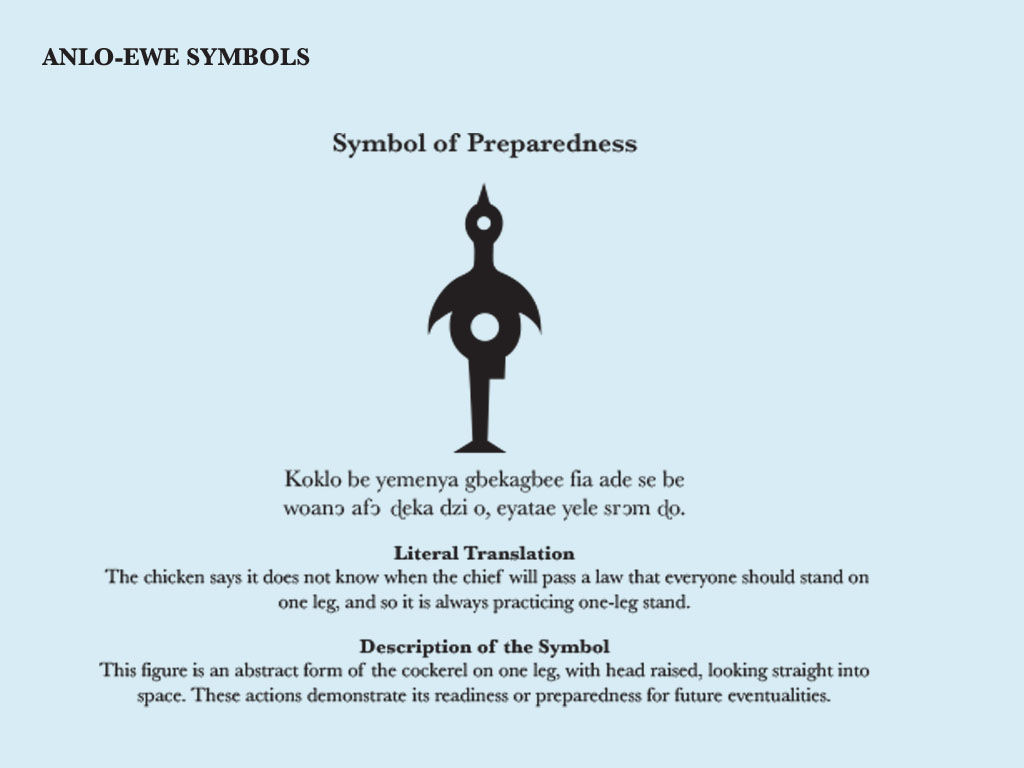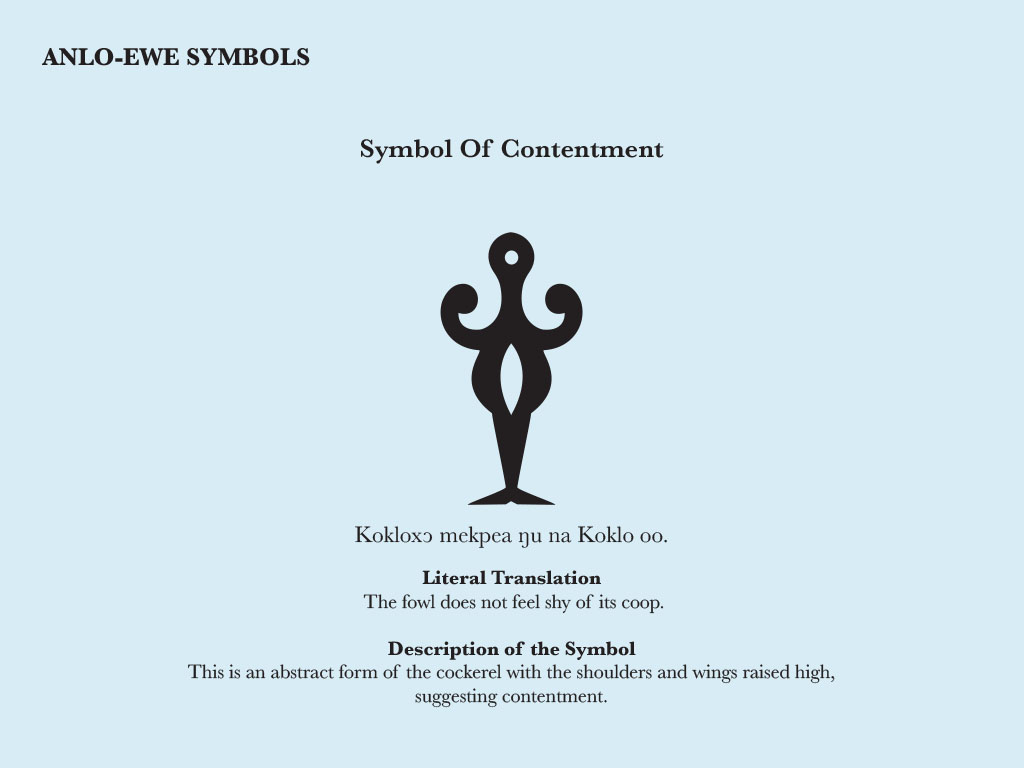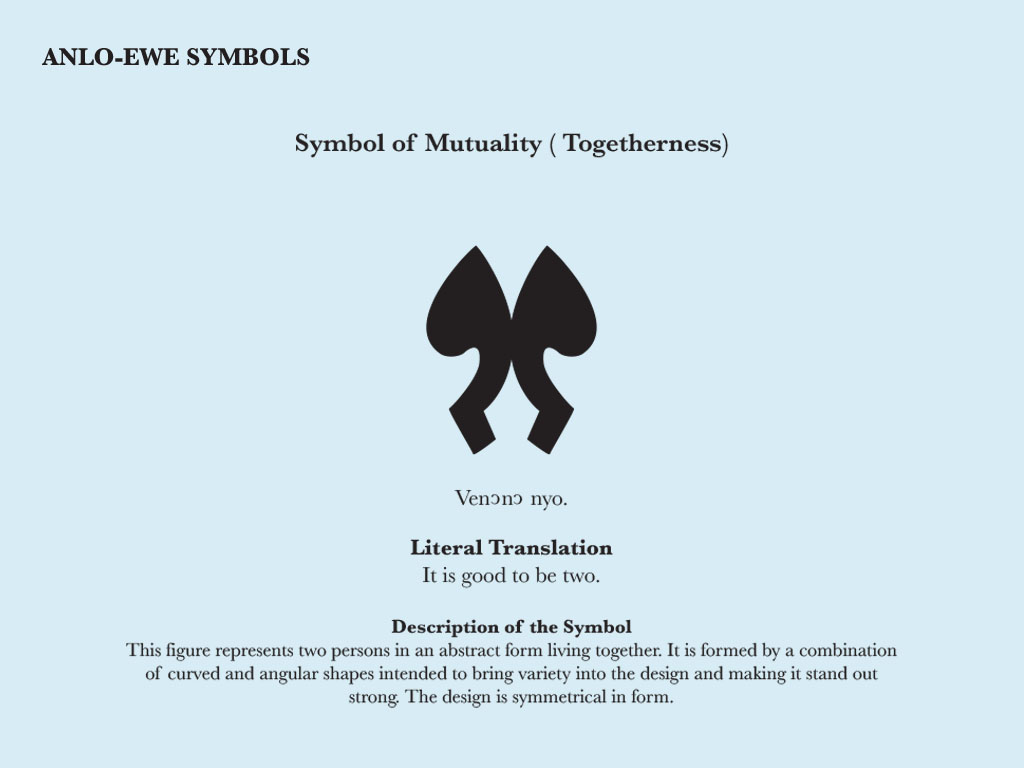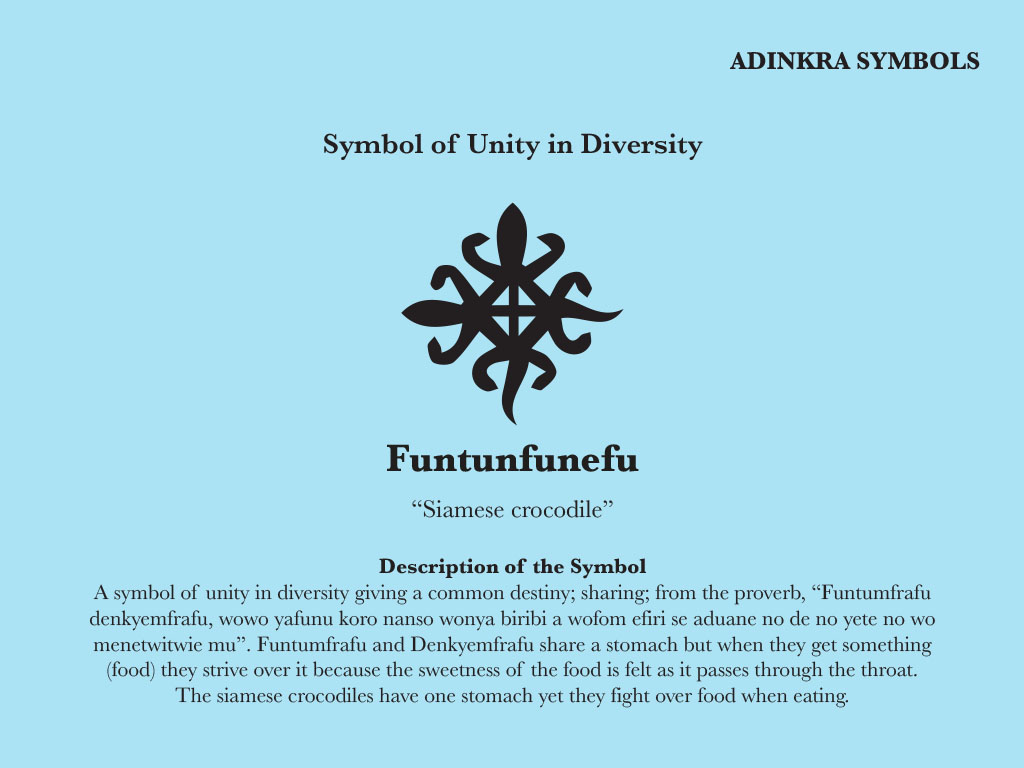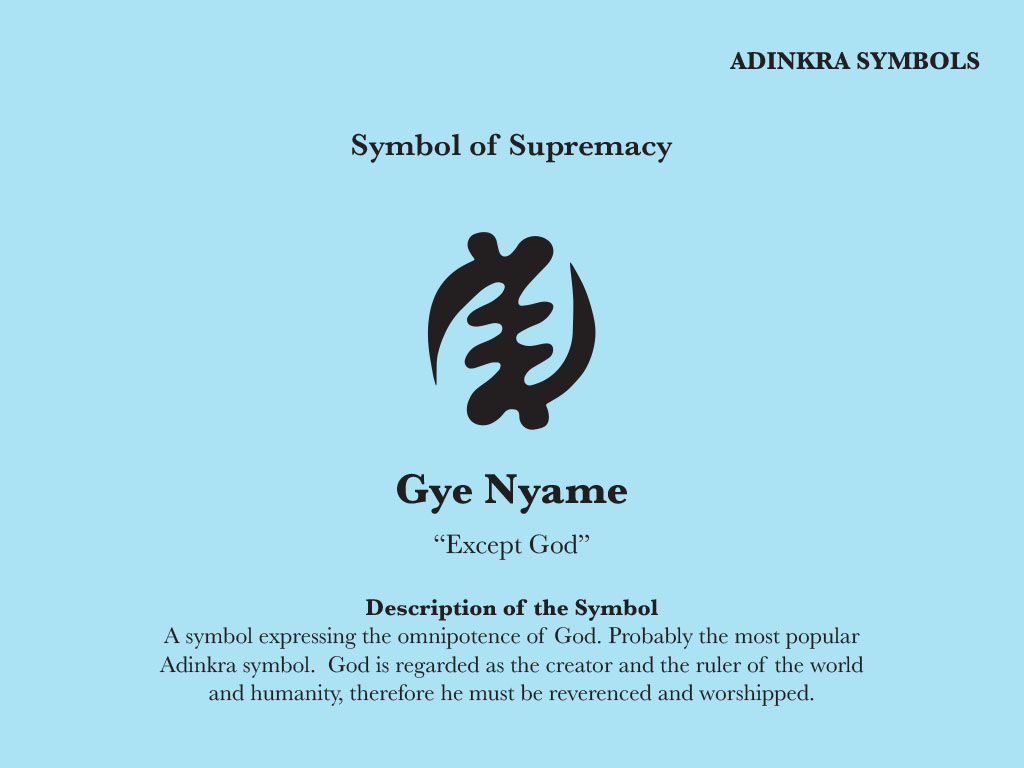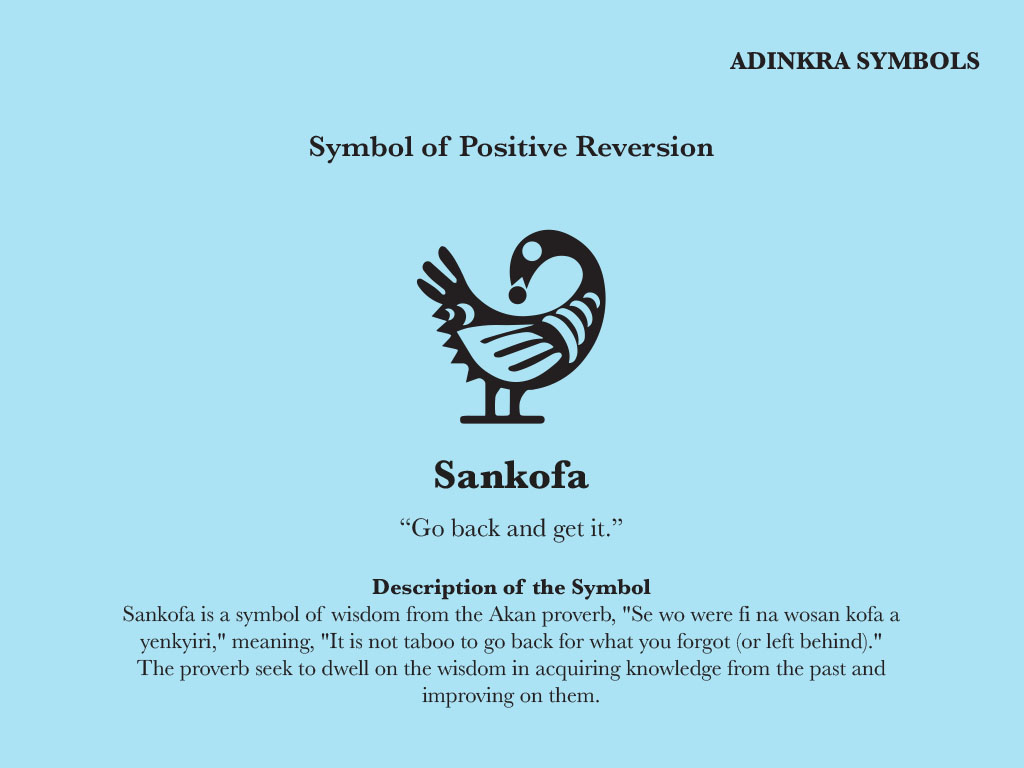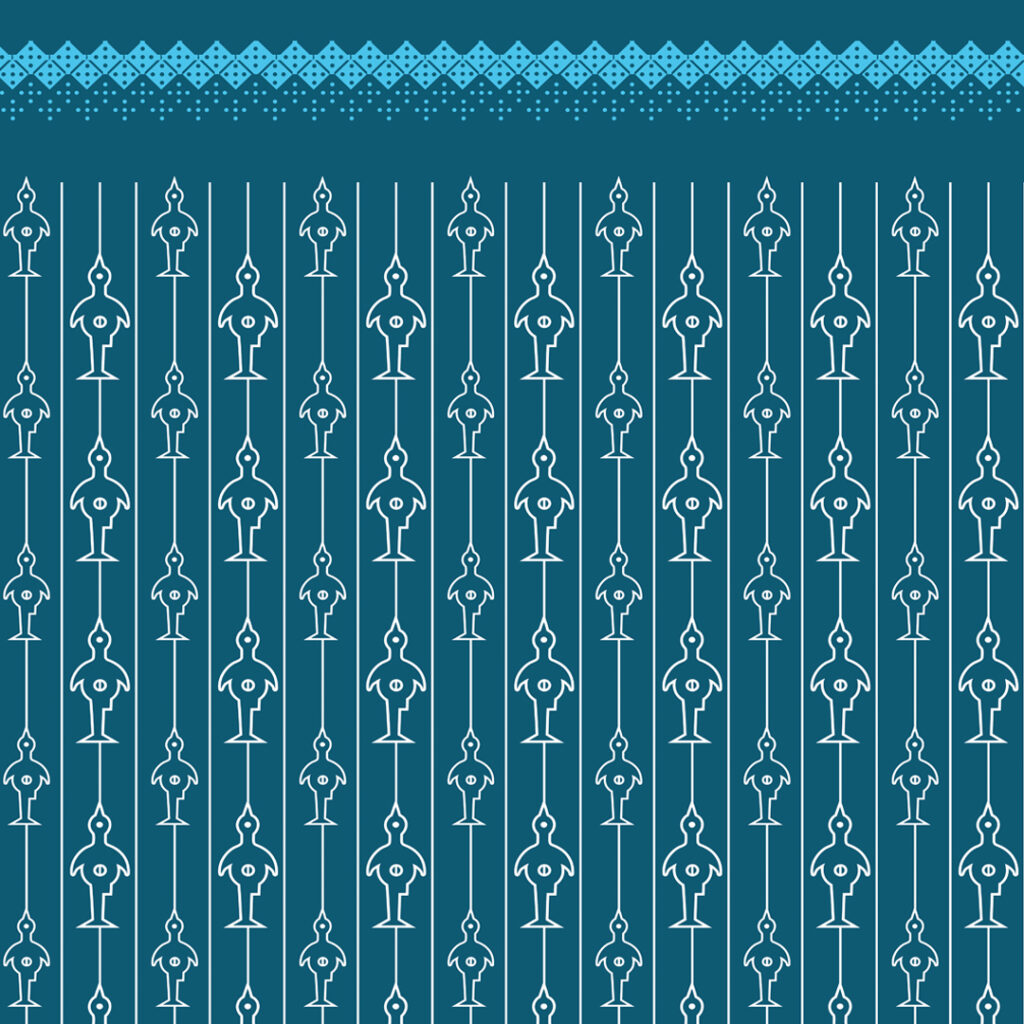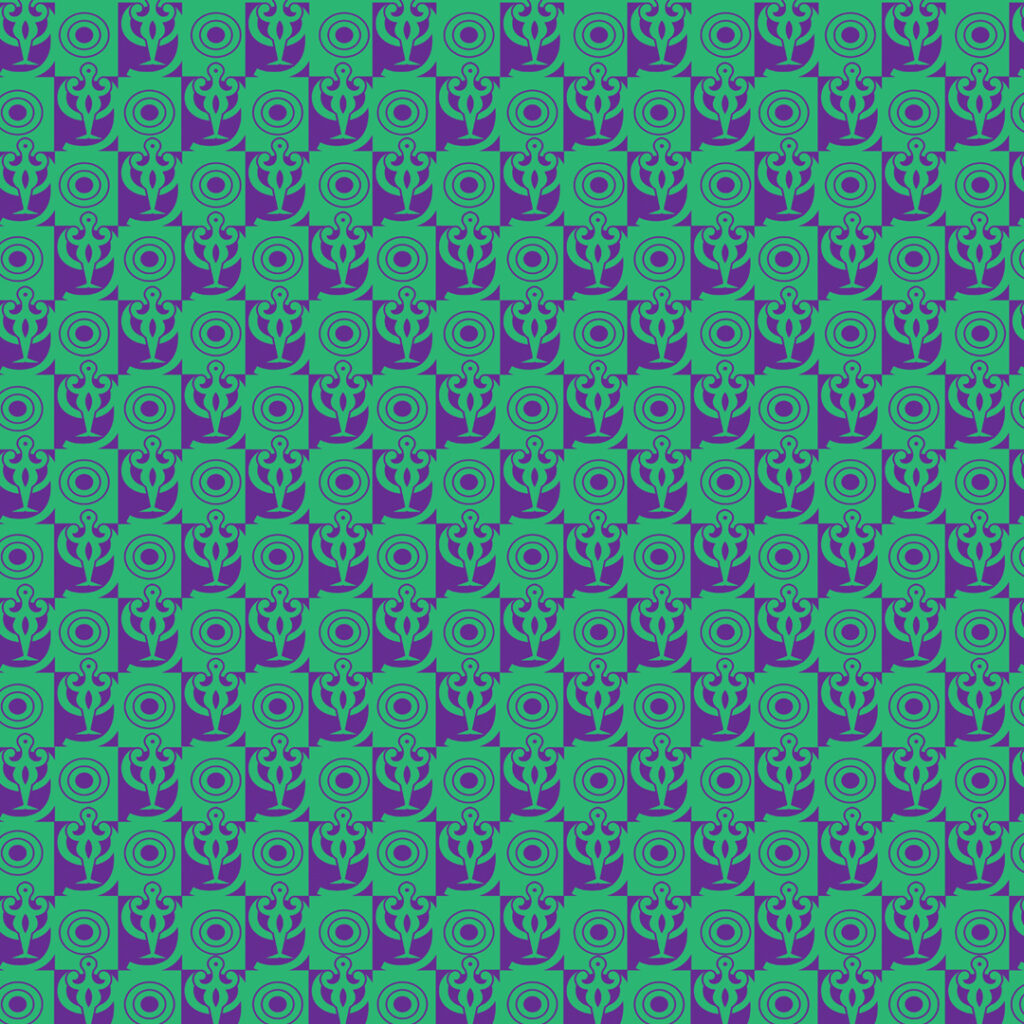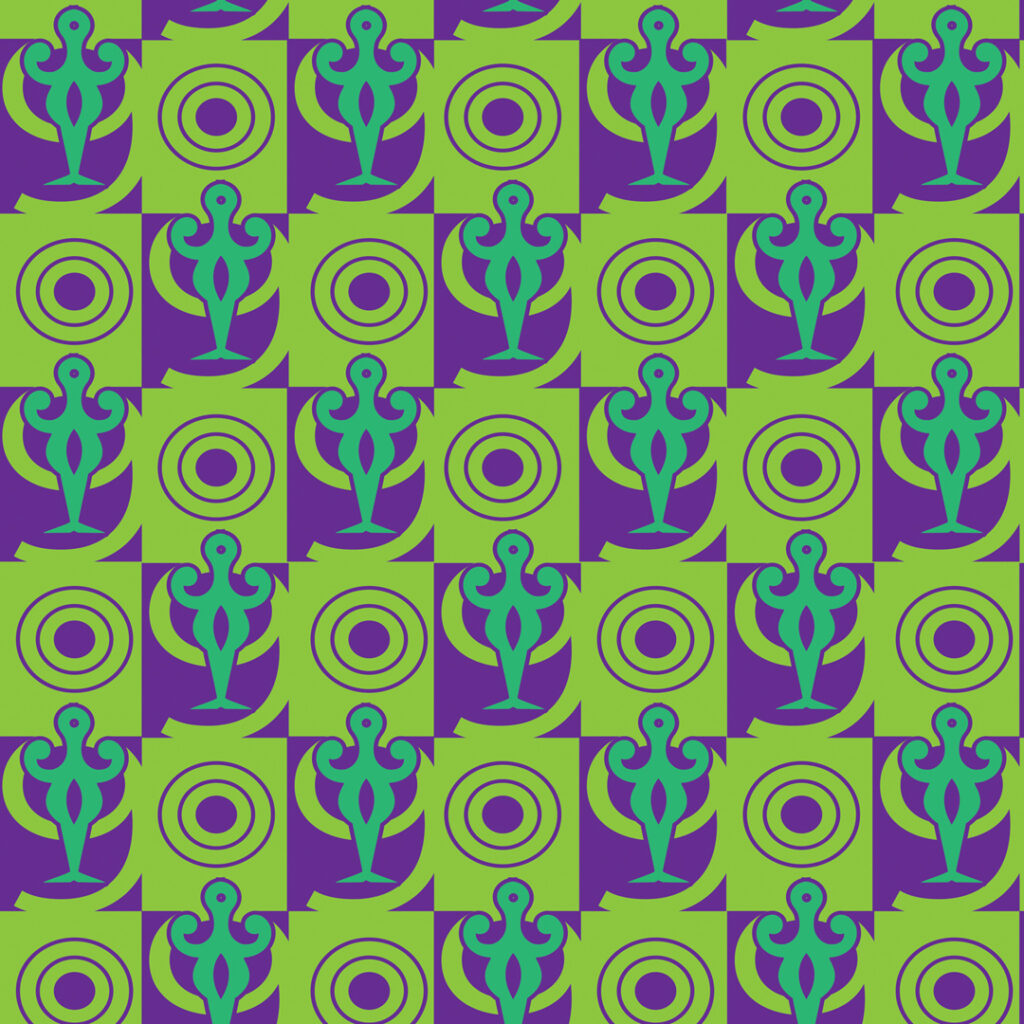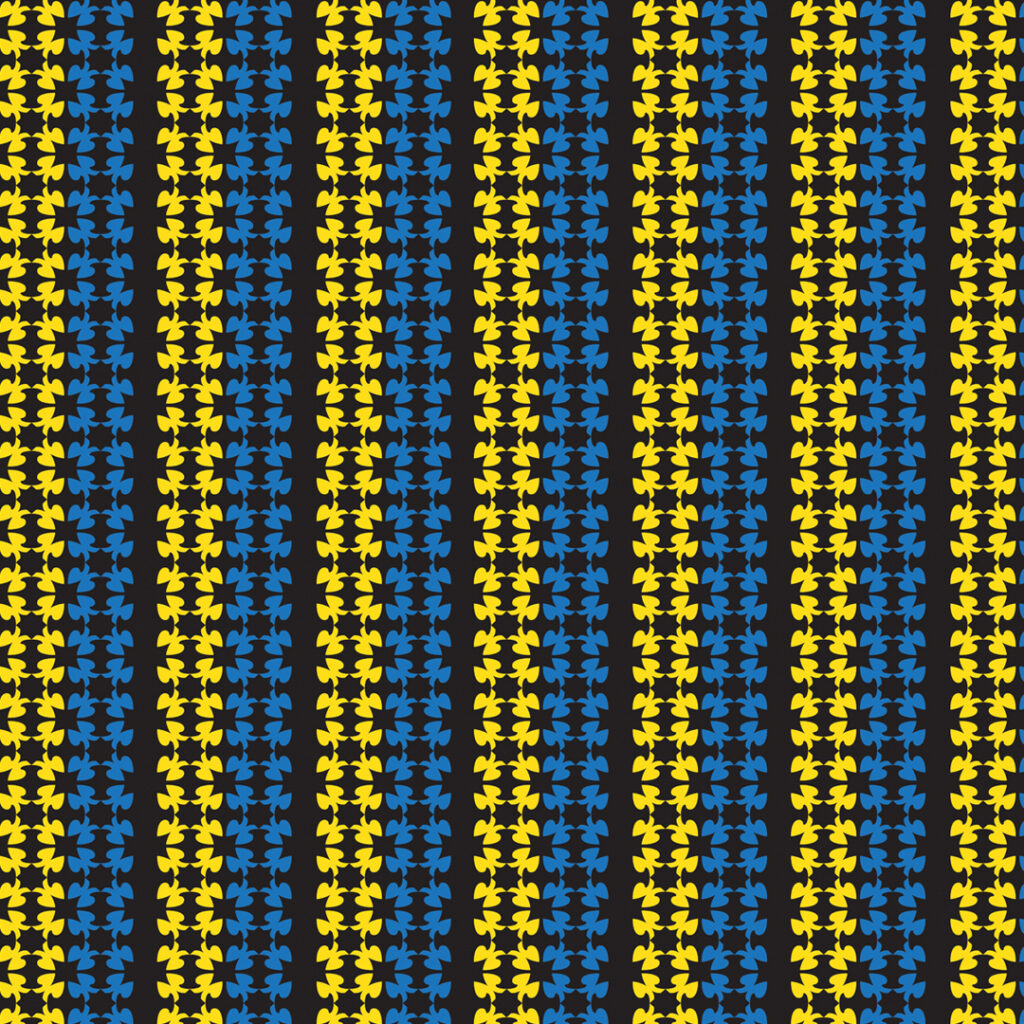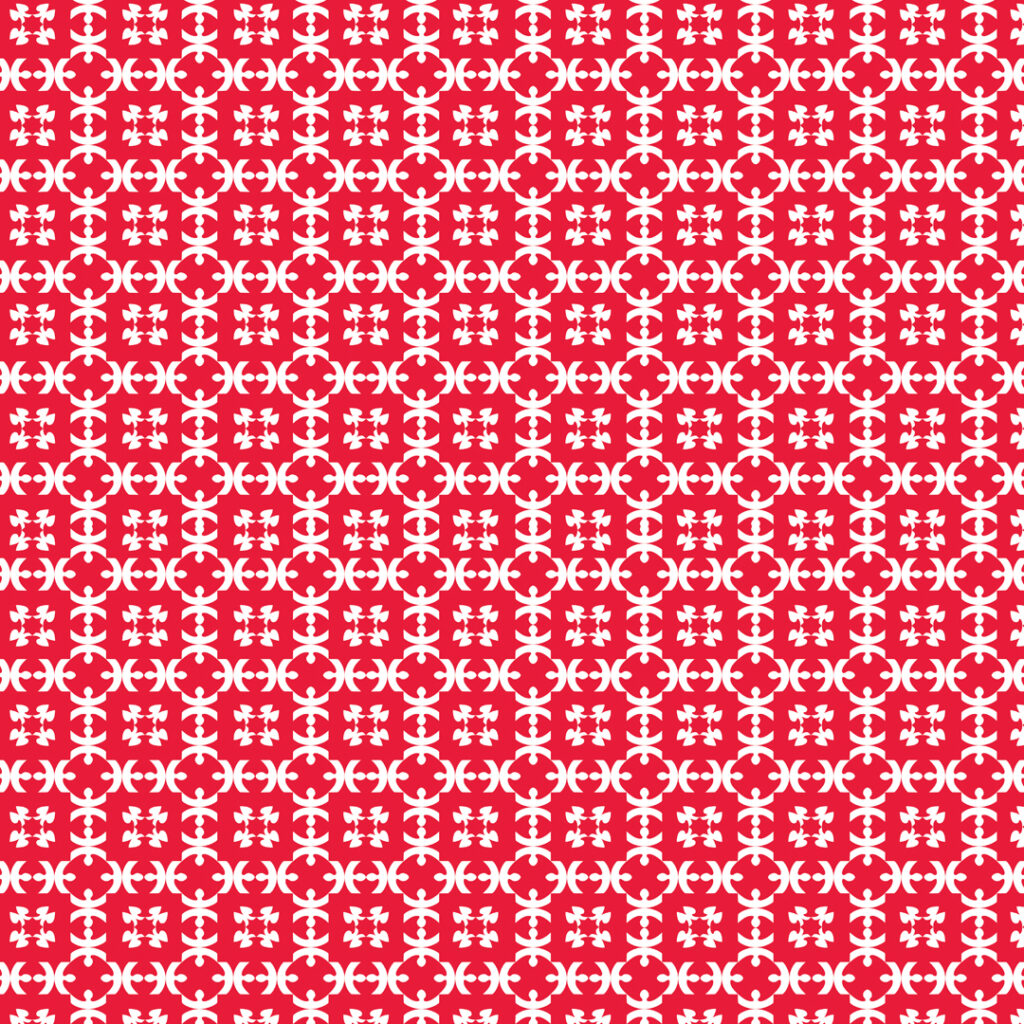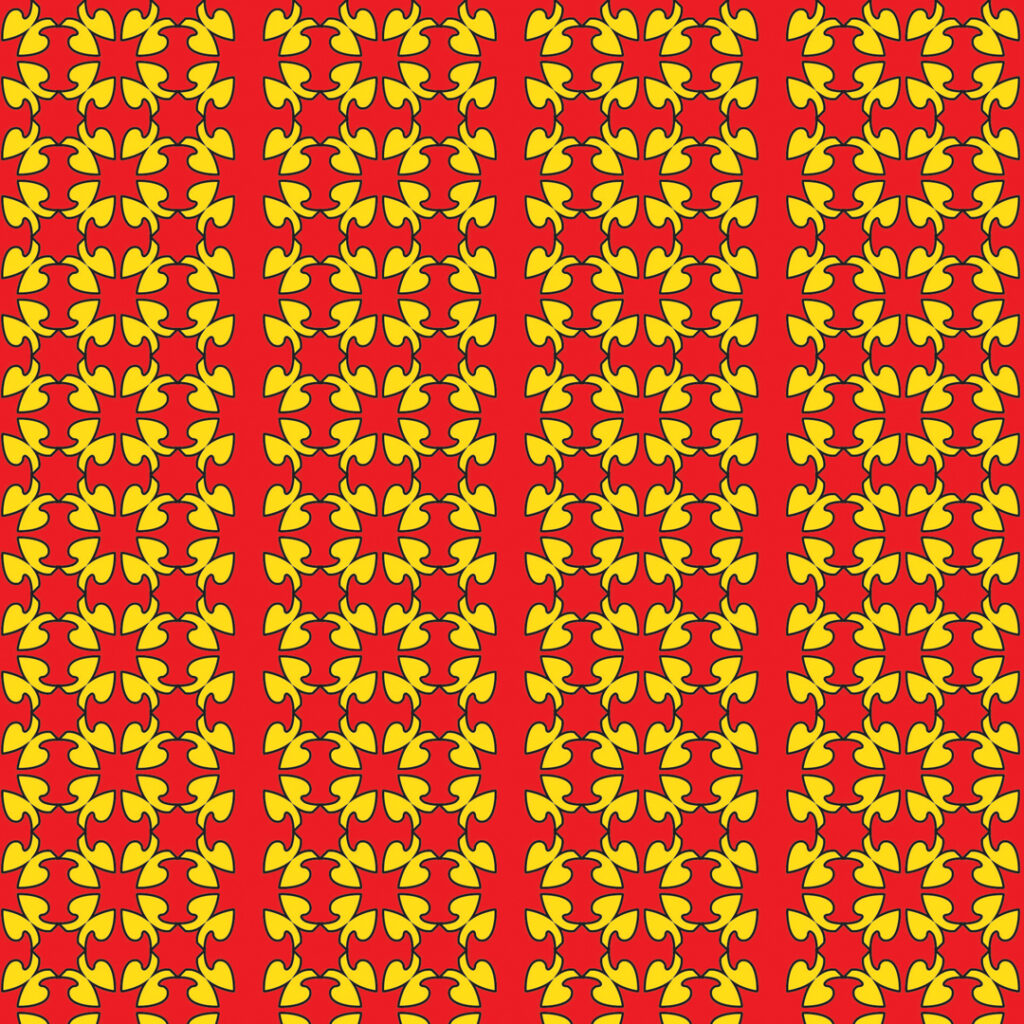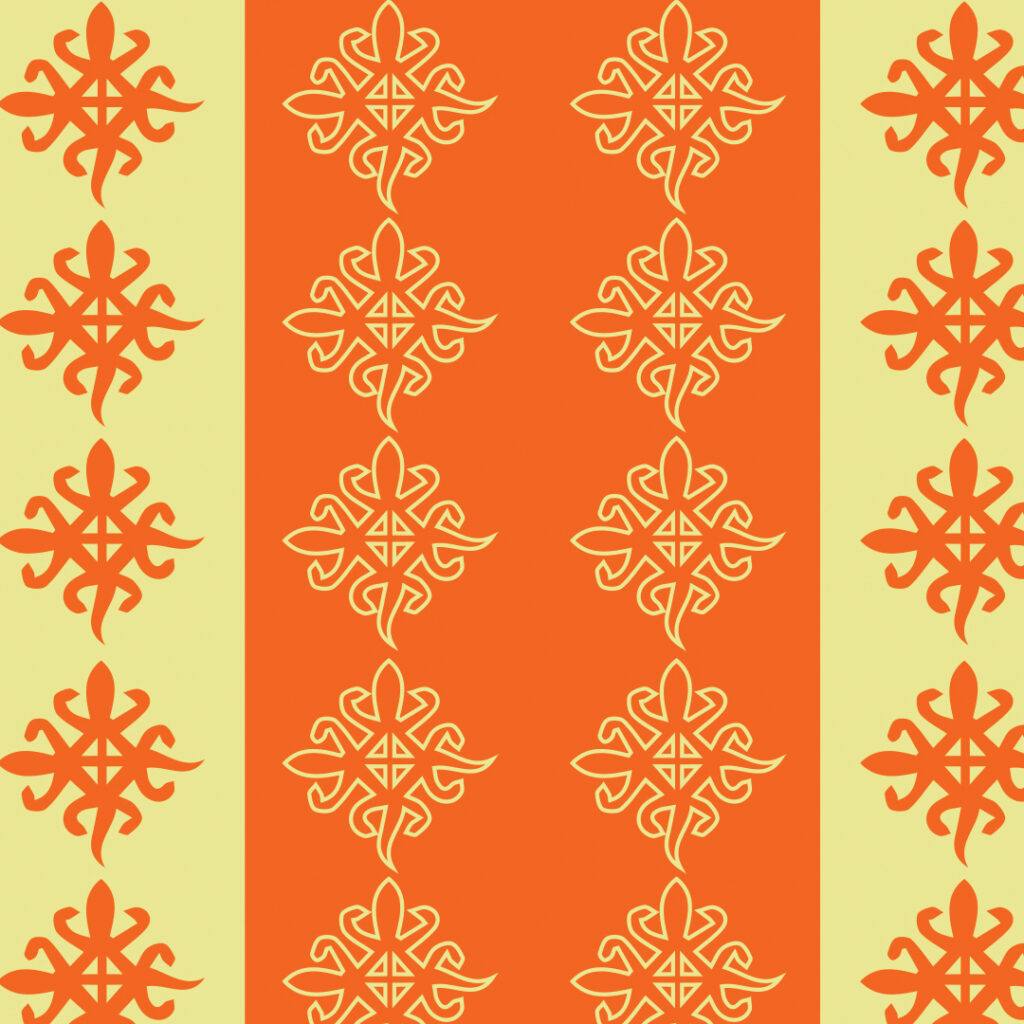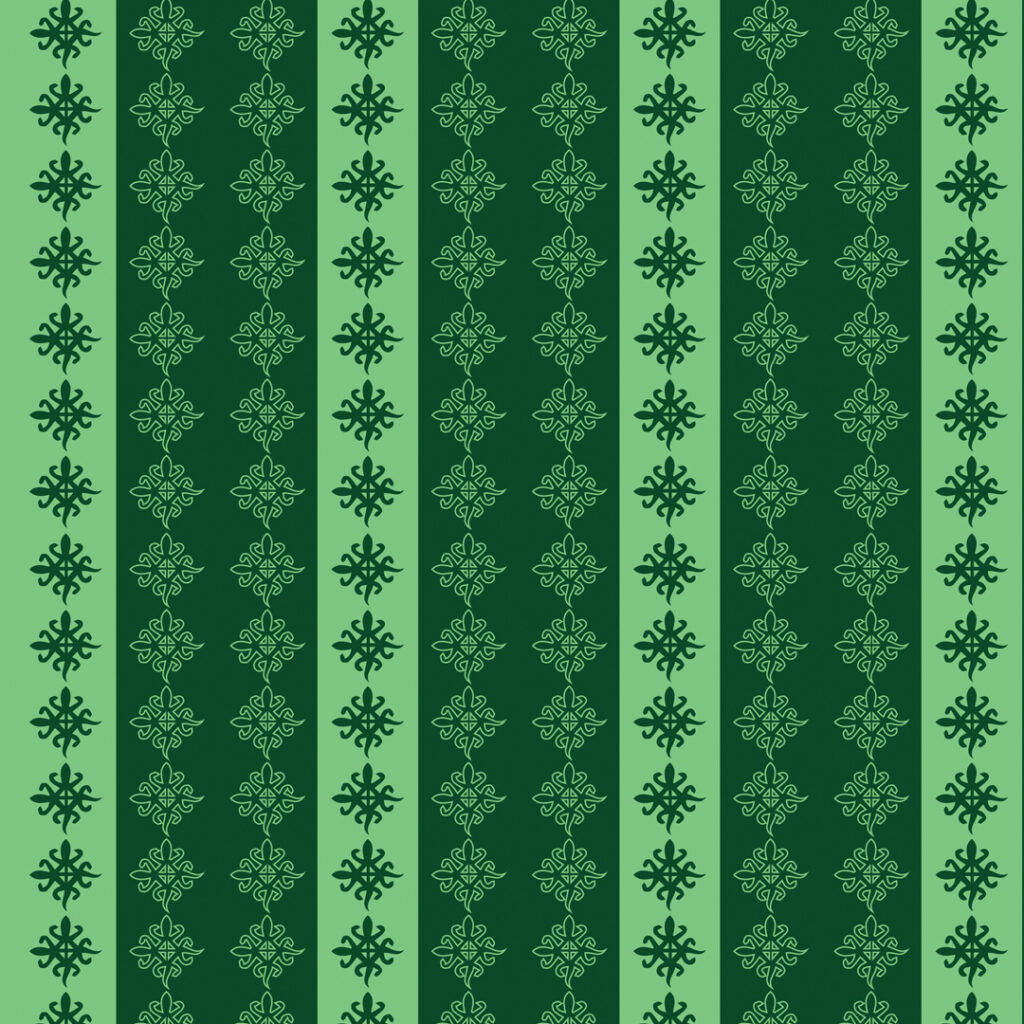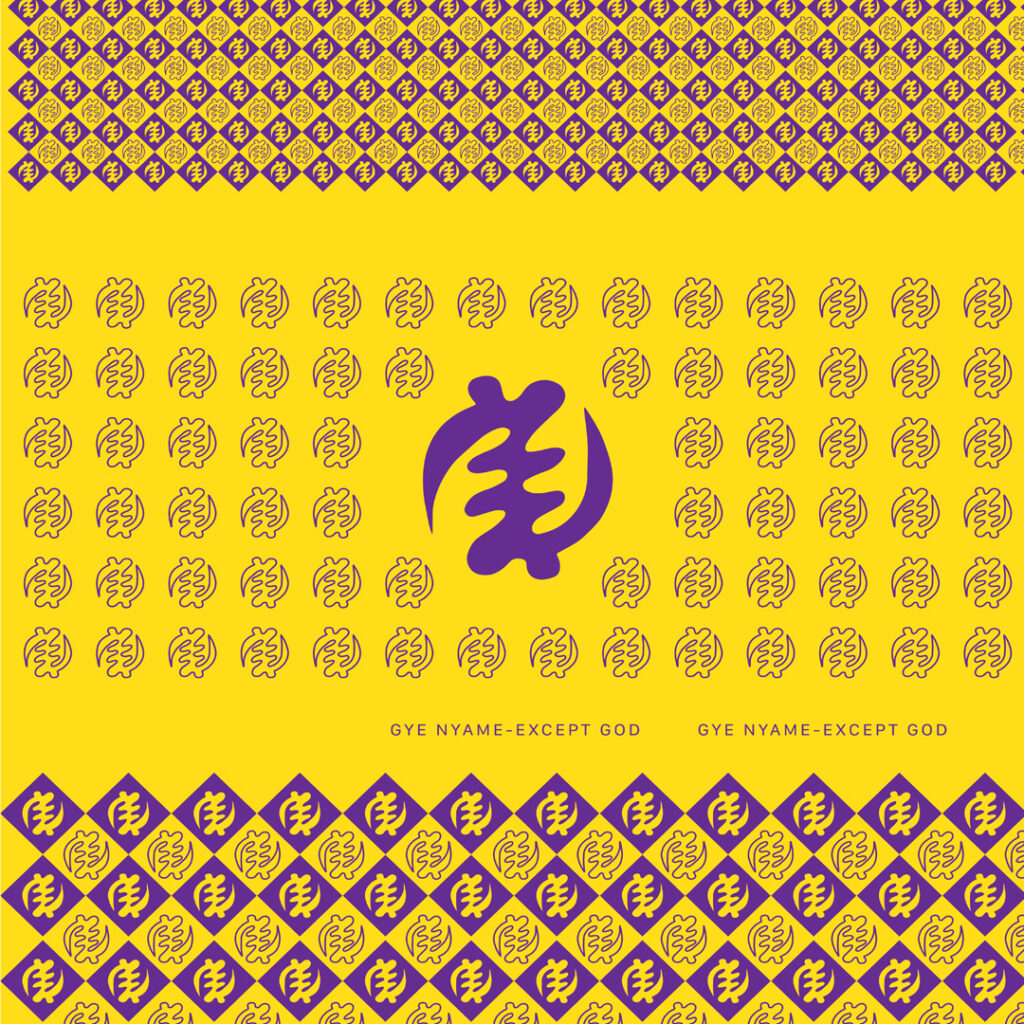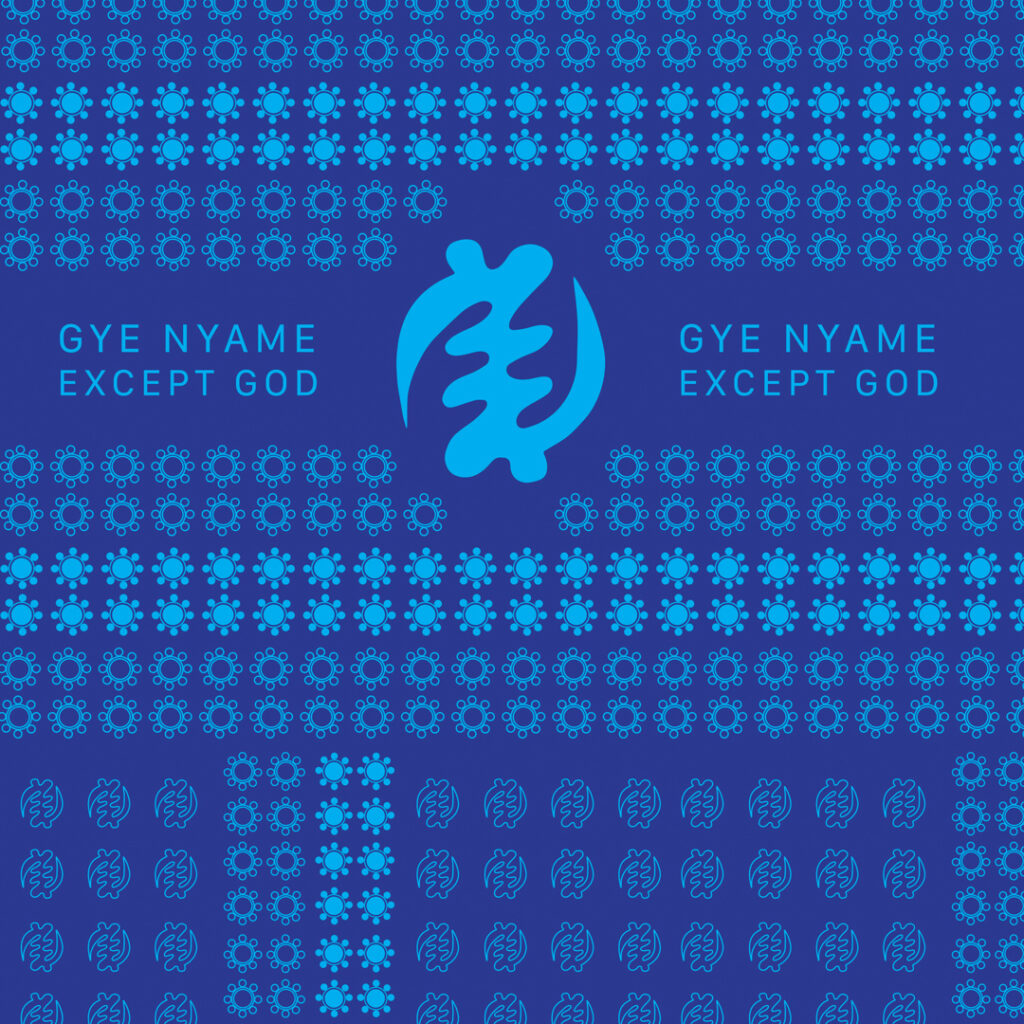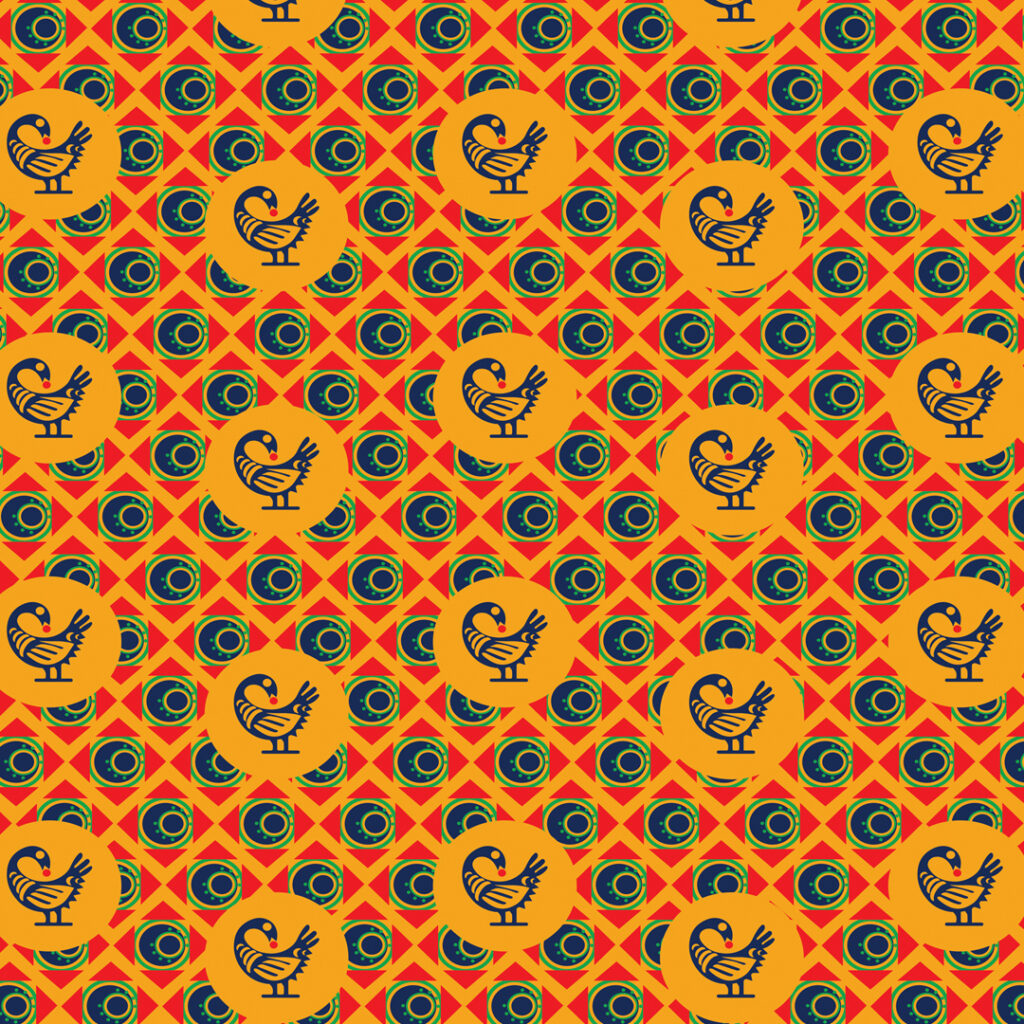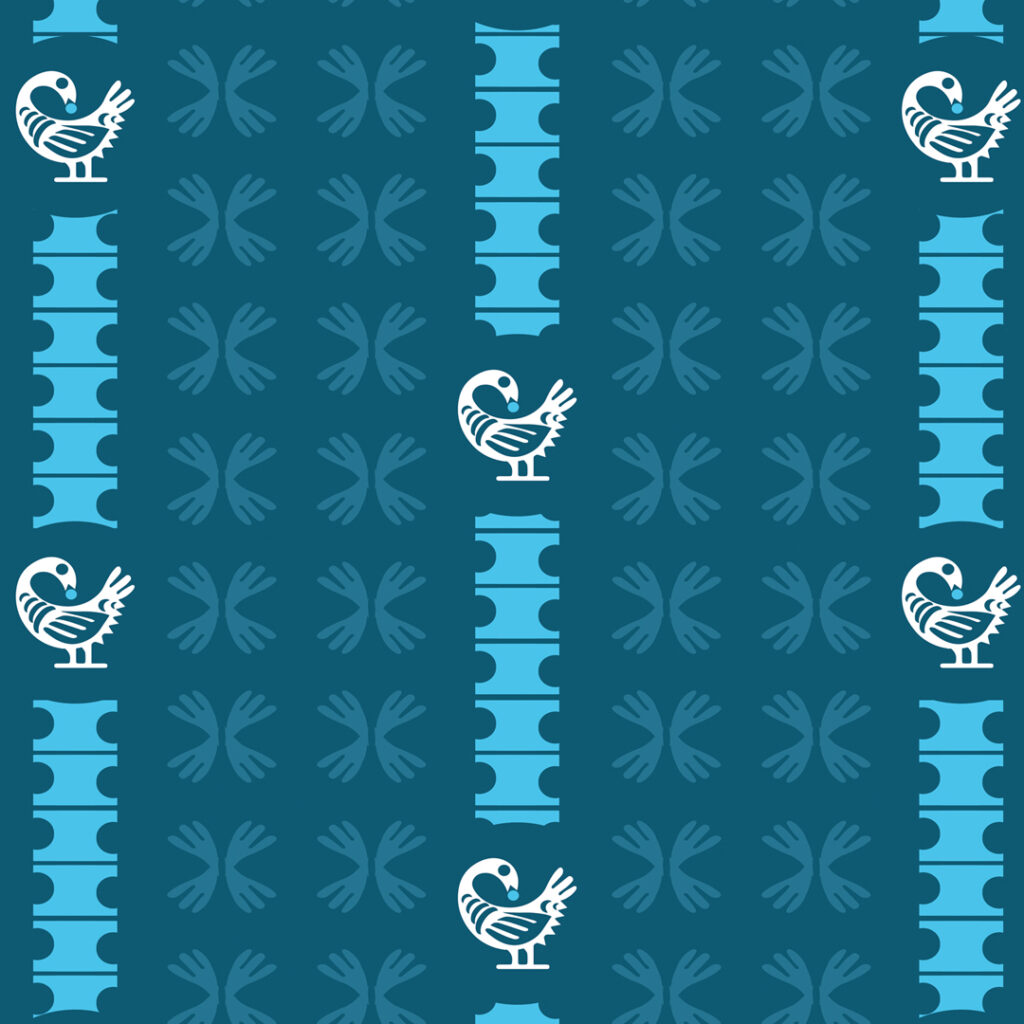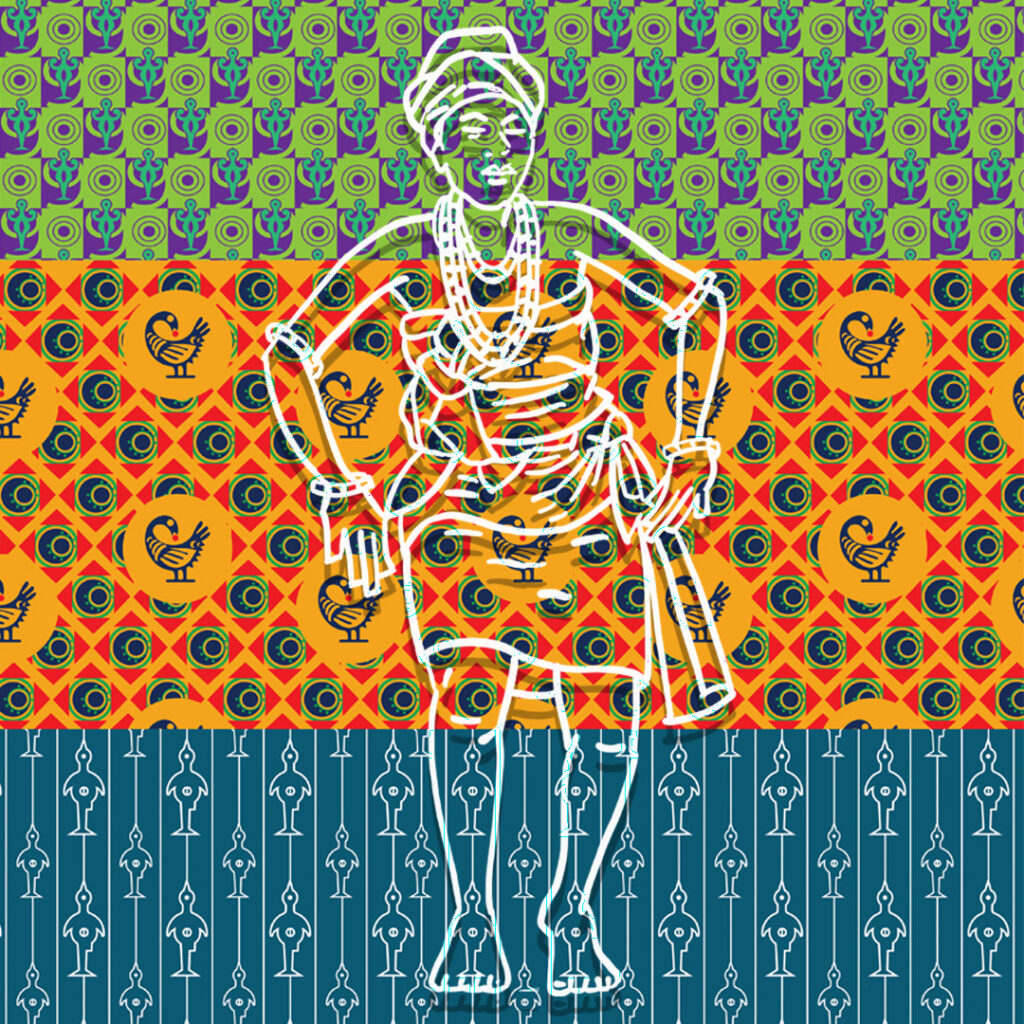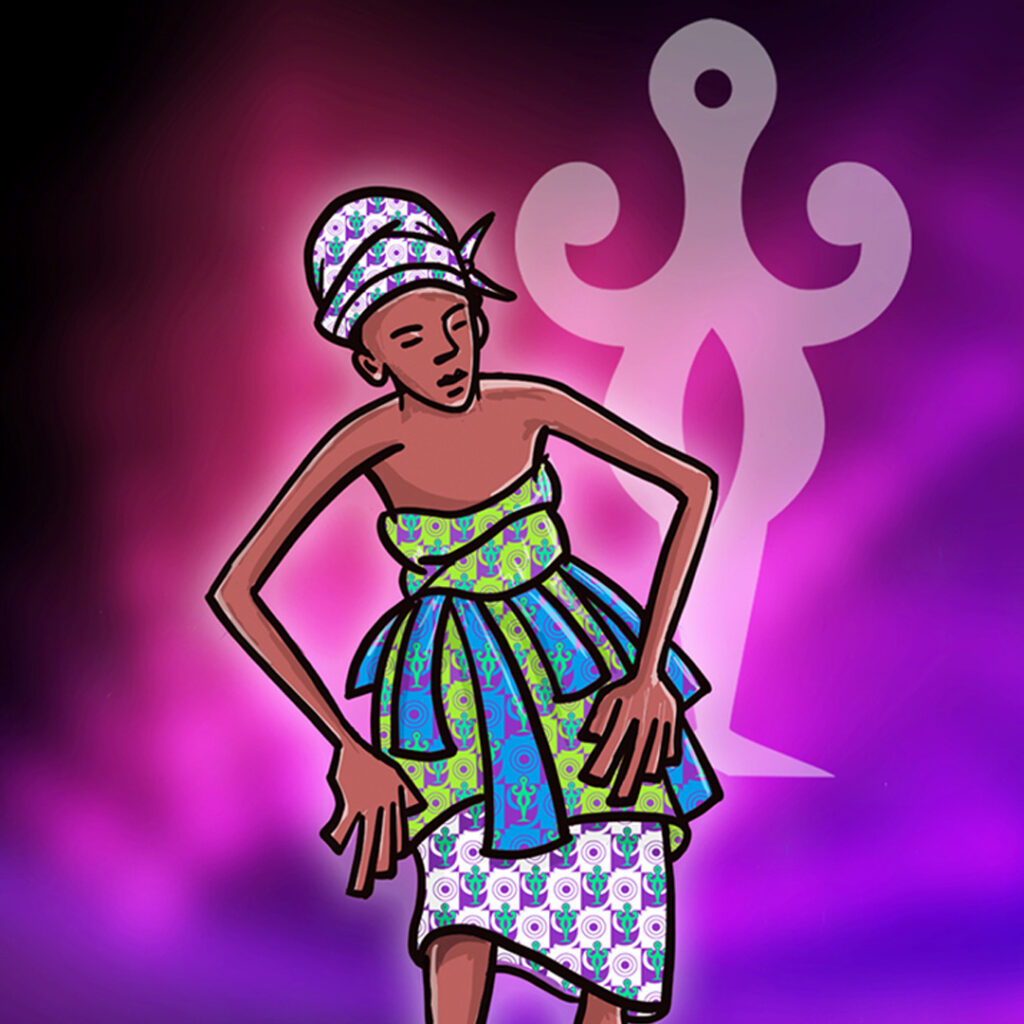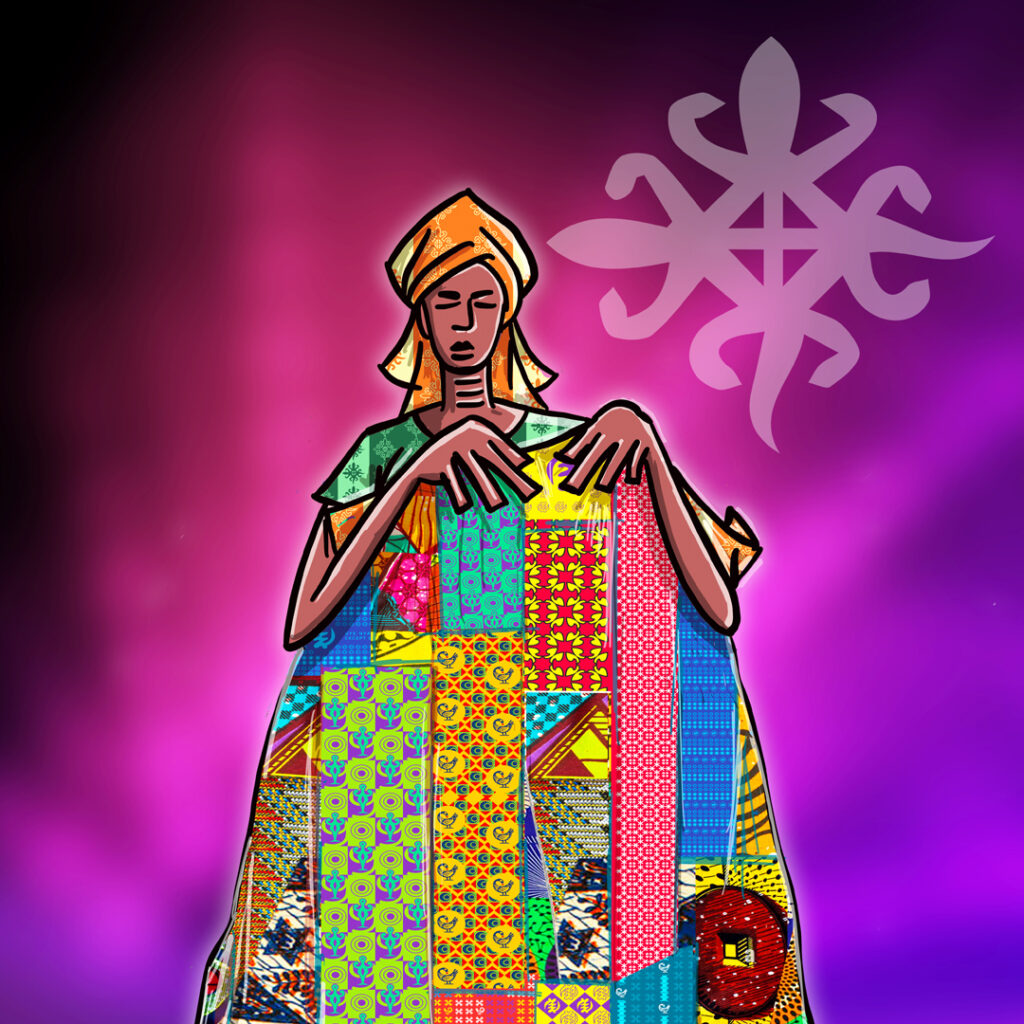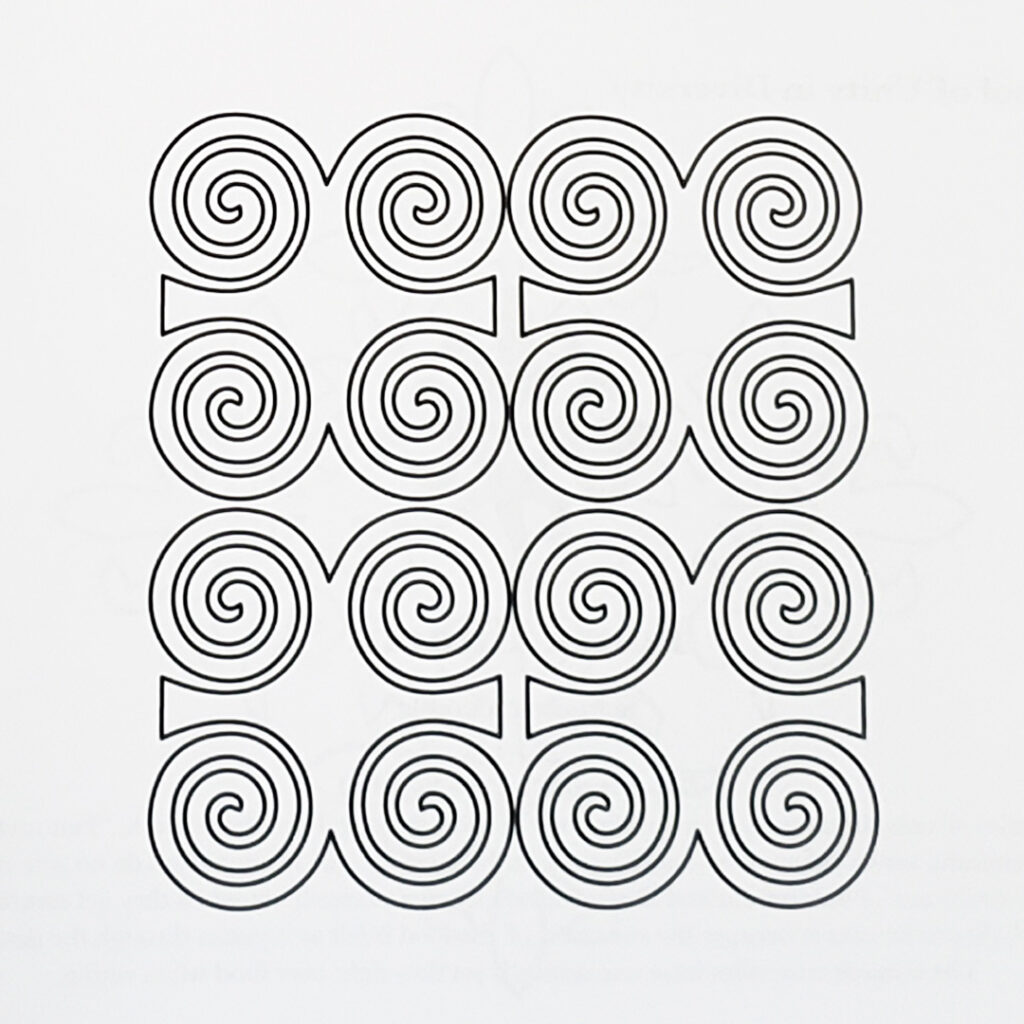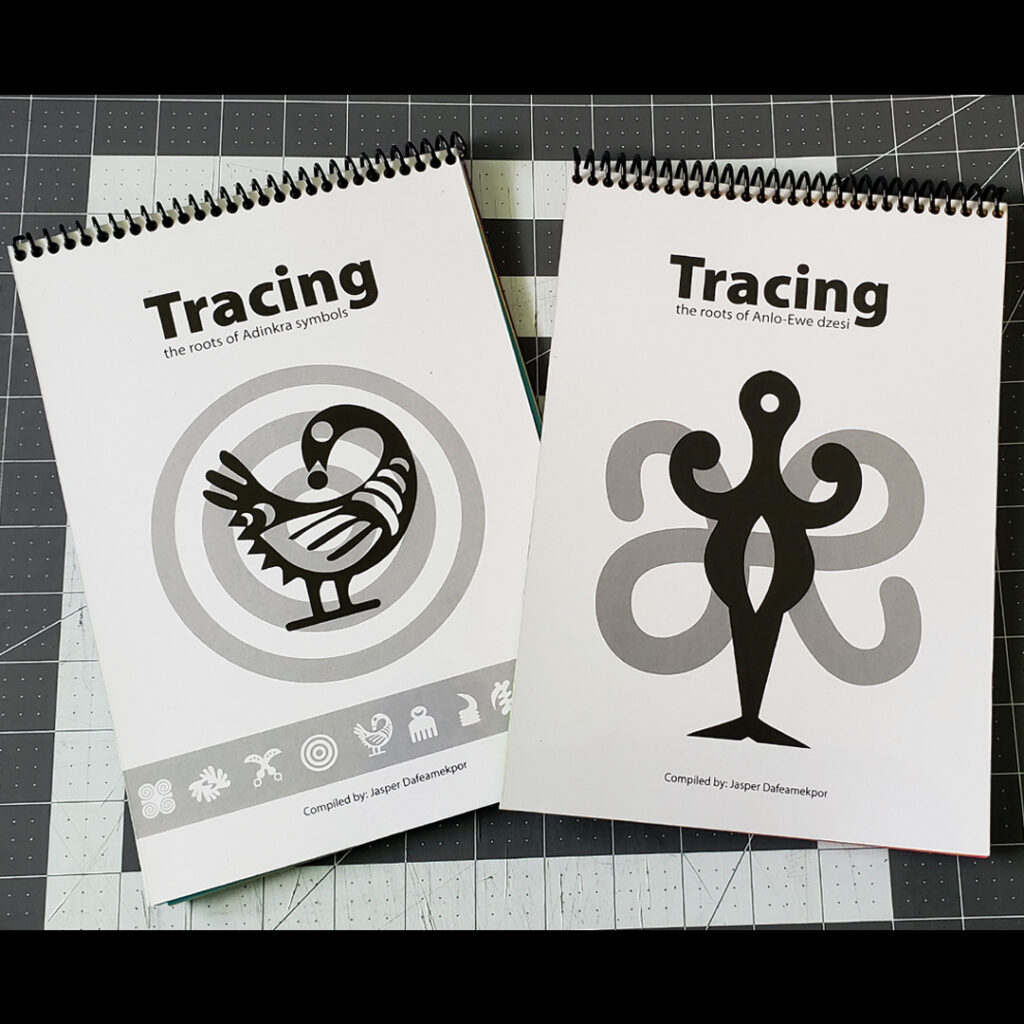Re-activation to Make Invisible Symbols from Ghana Visible through Graphic Design
Lessons from Granny features fabrics/cloths, illustrations, coloring, and stencil books using the Anlo-Ewe and Adinkra symbols. Over the years, Africans, African Americans, and other diasporas have used Ghanaian kente cloths to demonstrate pride in their African heritage and solidarity with Africa. This research was on the misuse of the kente cloth and the production of alternative forms of fabrics and patterns that can equally represent an African heritage. This project and exhibition create awareness and reintroduces some known and unknown Ghanaian symbols.
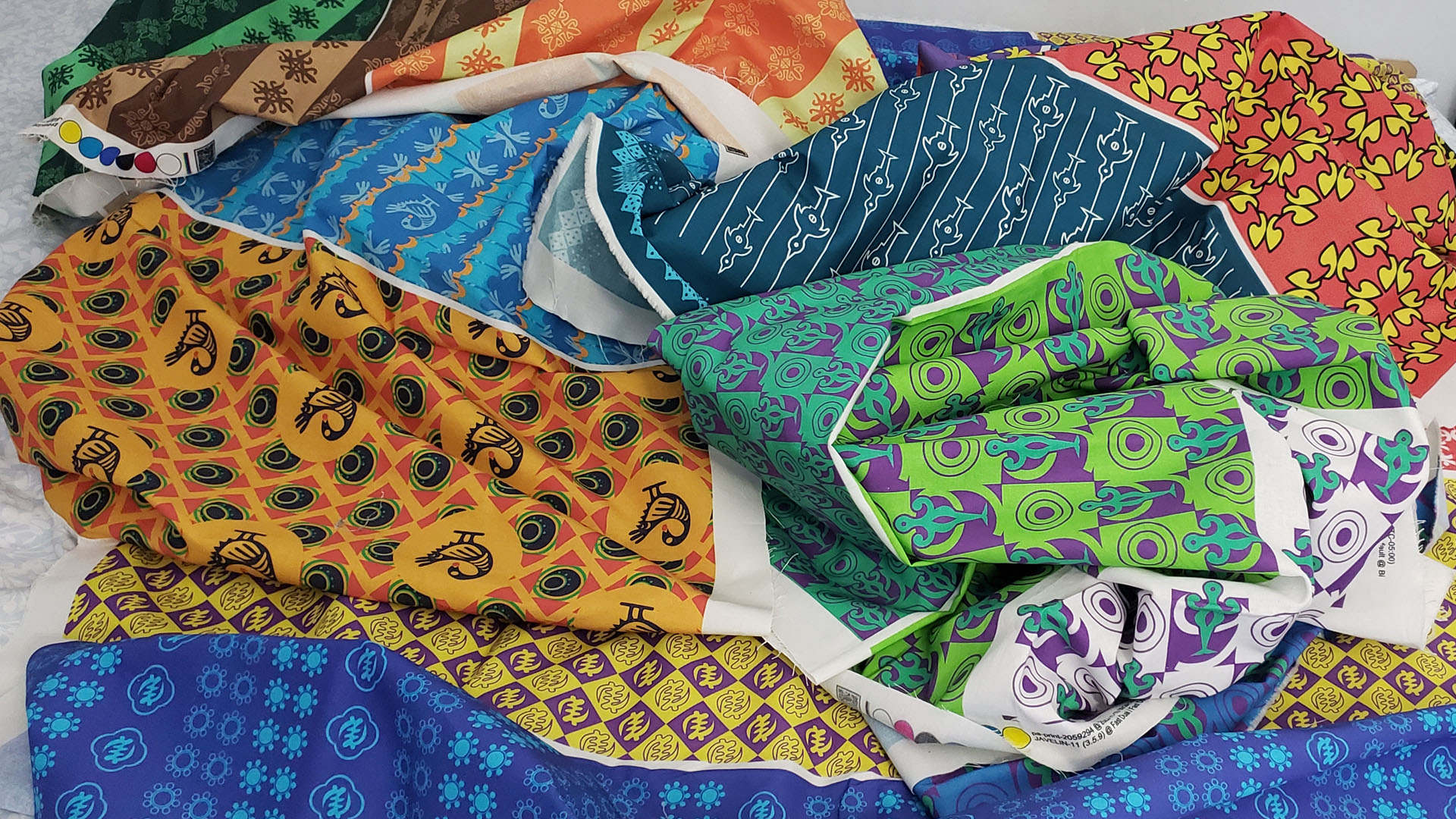
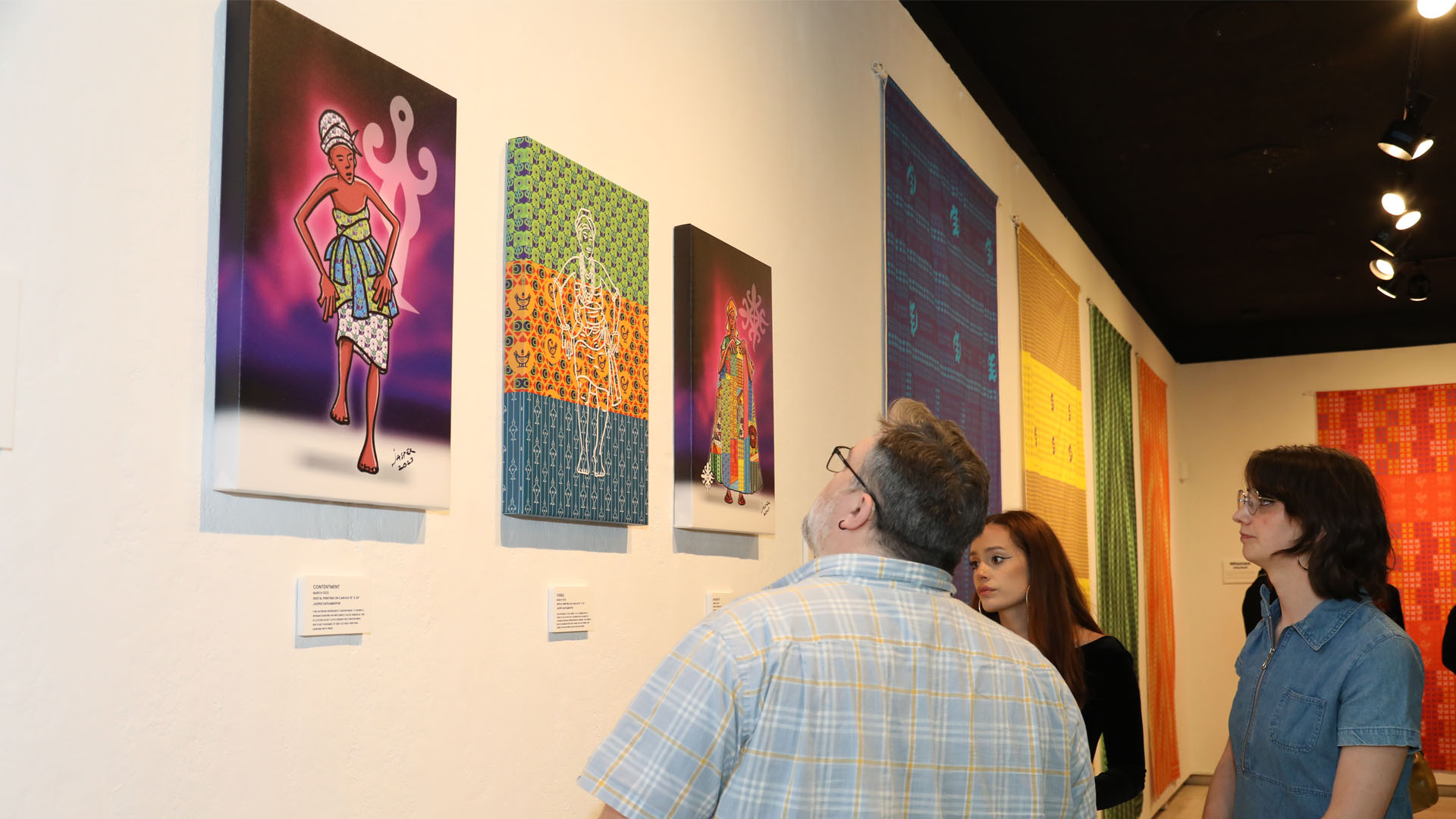
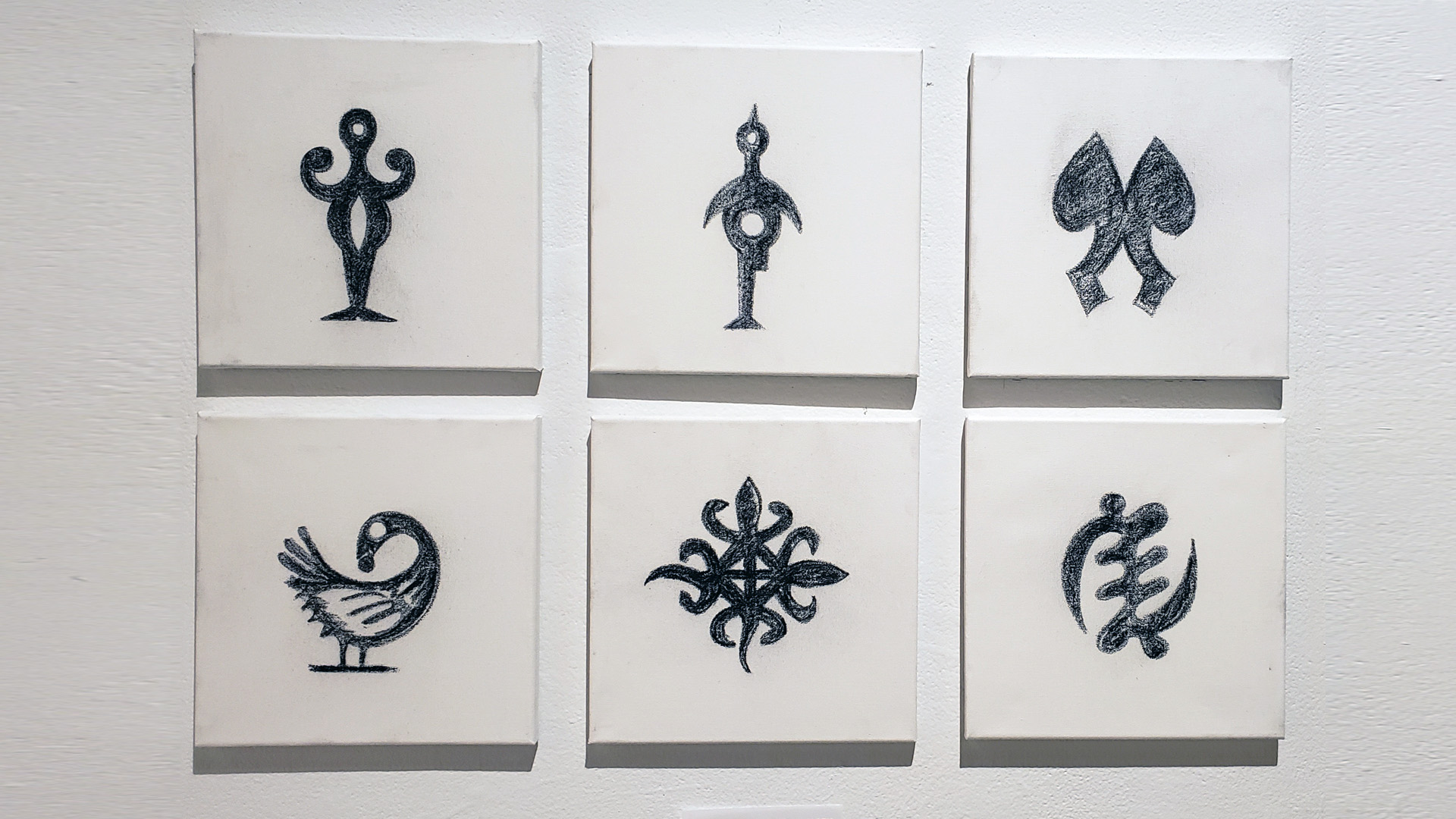
My knowledge and interest in proverbs and symbols were through my grandmother. She taught me to be proud of my heritage and be a good role model. My grandmother did not have a formal education, meaning she did not attend school and did not read or write in English or any local language. Her lack of Western education did not prevent her from instilling knowledge, words of wisdom, and moral values in me. My grandmother was sophisticated linguistically. She spoke three Ghanaian languages; Ewe, Ga, and Akan. She used complex proverbs and all other wise sayings to advise and educate me. My grandmother is just one example of pre-colonial era grannies from all over Africa who may not have received a formal education but had imparted indigenous and valuable knowledge to us than we received through formal education. They must be honored.
“Most Africans, who have a great wealth of knowledge and experience, were not allowed to contribute to education because they did not speak English and French.”
These symbols trace their origins to the abundant proverbs and myths of Ghana and Africa, imbued with profound wisdom and guidance. Employing Ghanaian symbols in artworks and wearables goes beyond their aesthetic appeal; it embodies the messages they carry.
My objective is to harmoniously blend elements from my Ghanaian culture into my present Western lifestyle, creating a cultural nexus—a realm of knowledge for visual artists, graphic designers, and educators. This platform will inspire the utilization of Ghanaian and other African symbols, projecting the richness of African heritage, akin to the iconic kente cloth.
Lessons from Granny – Exhibition
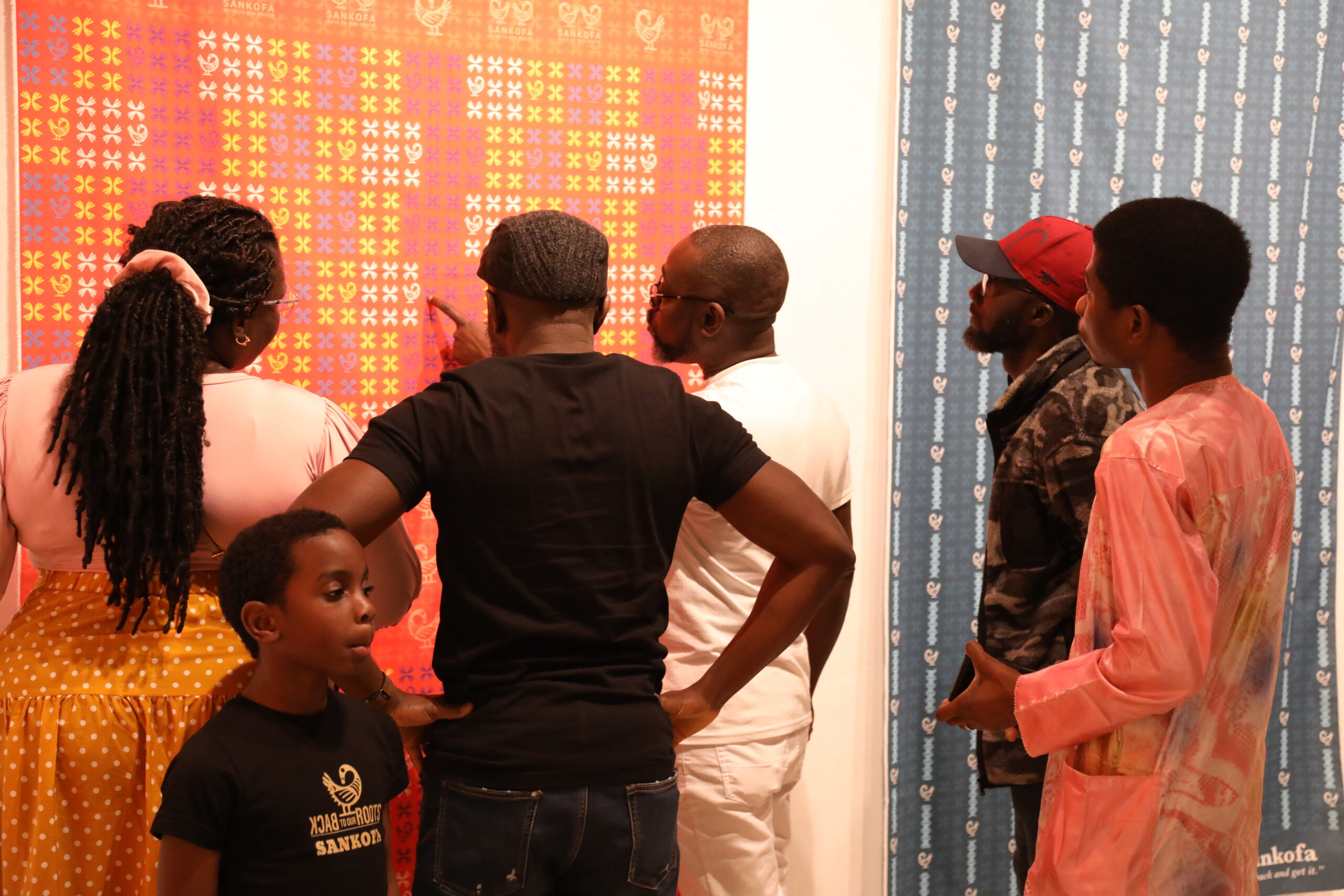
From March 28th to April 1st, 2023, the Ohio University gallery, Seigfred Hall, hosted my captivating exhibition featuring fabrics, illustrations, coloring, and stenciled books inspired by the rich cultural heritage of the Anlo-Ewe and Adinkra symbols. The public had the opportunity to explore and admire these artistic creations. The showcased fabrics were thoughtfully curated in two distinct styles – the Ntonso and Anloga market, adding a unique dimension to the exhibition.
Anloga Market
Anloga is a town in the Keta District of the Volta Region. Anloga lies east of the Volta River and just south of the Keta Lagoon. Anloga market is a general market where they sell almost everything, but it is popularly known as the biggest shallot market in Ghana. In the Anloga market, cloth sellers mostly drape their cloth. This display allows viewers, buyers, and visitors to see all the sides of the cloth.
My grandmother used to buy her cloths from the Anloga market. It was always fun following her when I was a child to Anloga market for cloth shopping. I used to hide among the displays or play “hide and seek” with my grandmother but with caution. The Anloga cloth sellers’ way of displaying their cloth is replicated in this exhibition area.
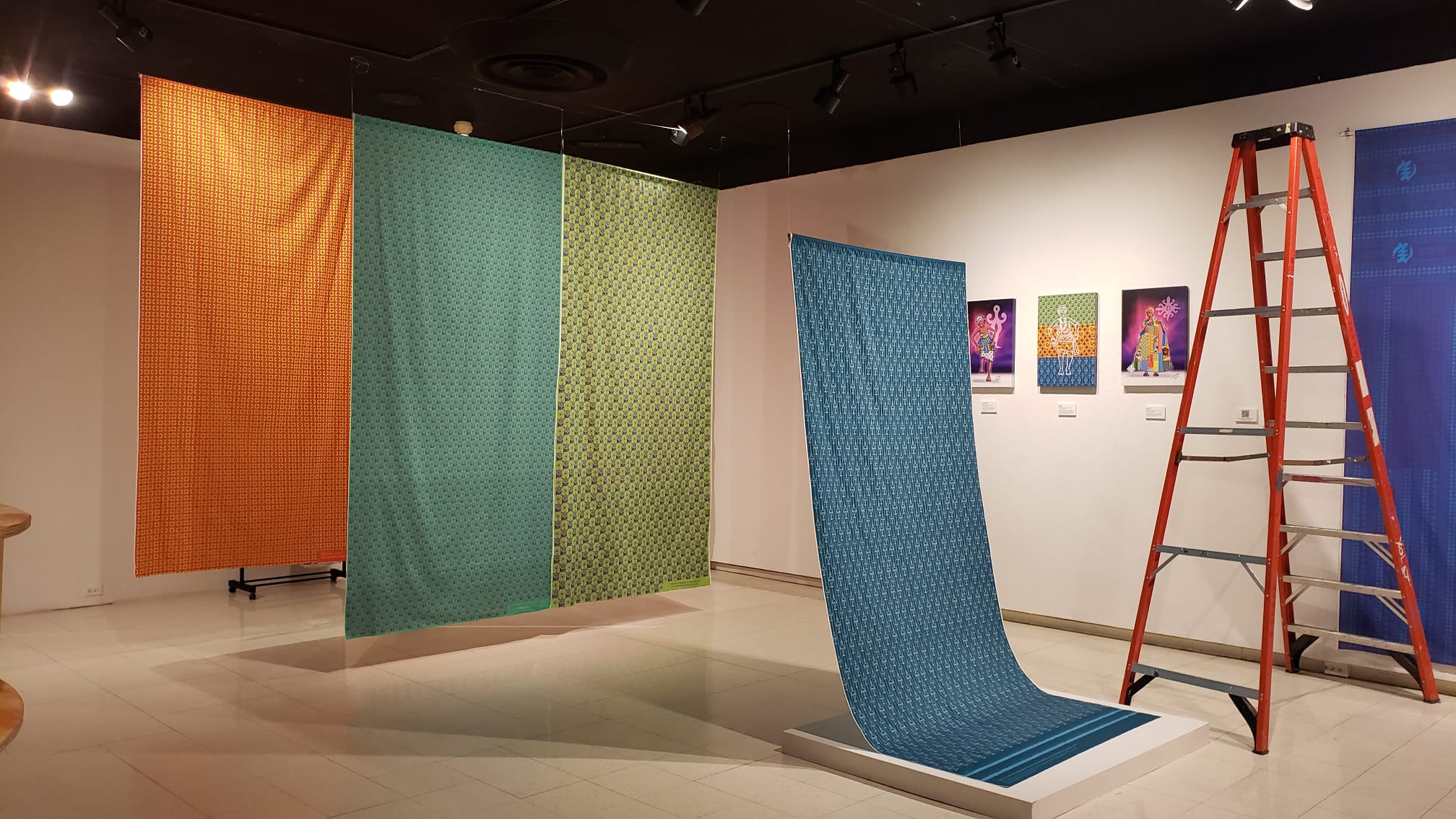
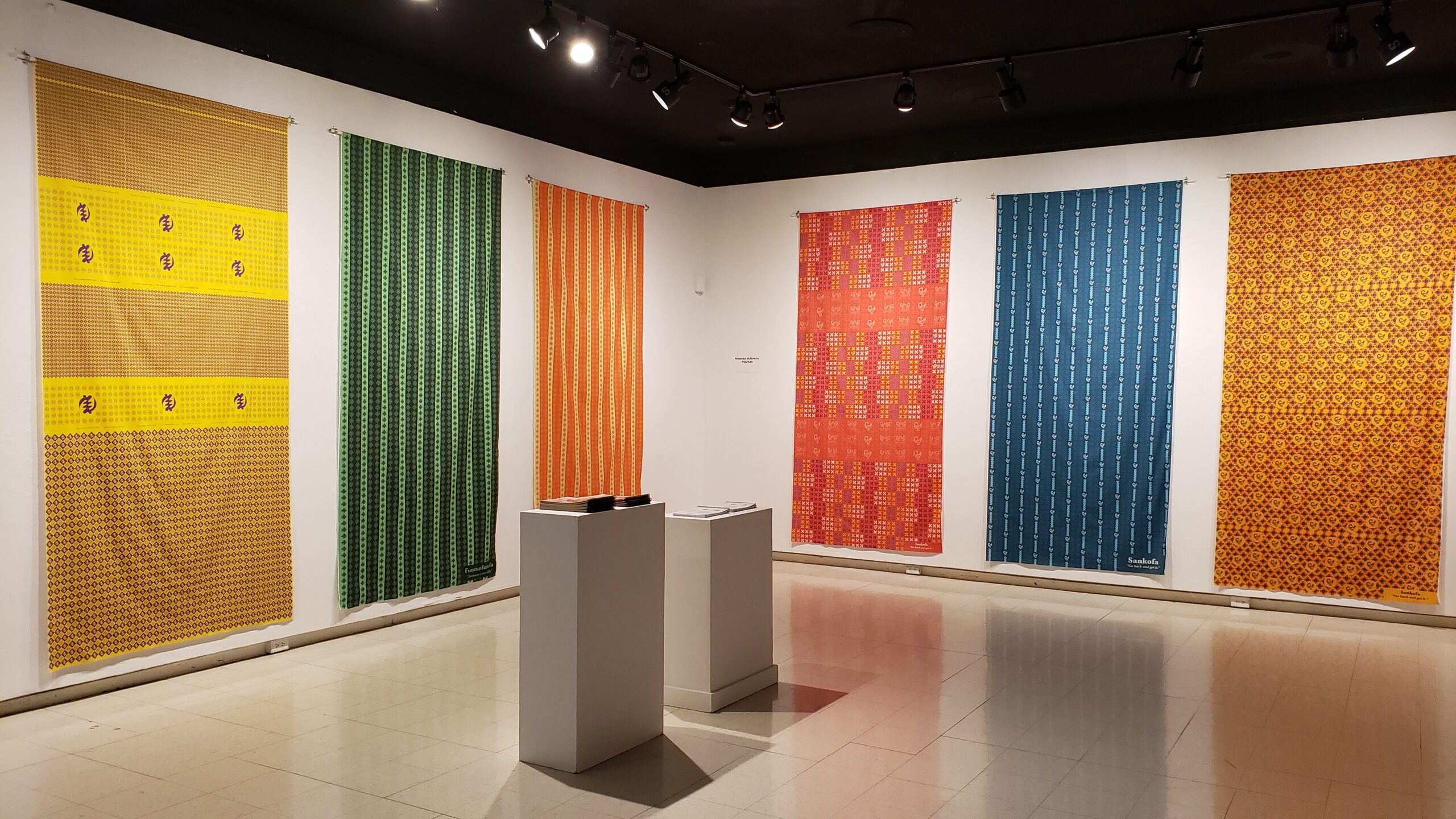
Ntonso Market
Ntonso is the homeland of adinkra cloth and the only place in Ghana where traditional adinkra is made locally from scratch. Ntonso is Ghana’s biggest producer of adinkra, a fabric known for its symbols and proverbial wisdom. Earlier adinkra cloths were initially produced in black, brown, and red but have changed over the years and are now made in all colors and used for almost all occasions throughout Ghana.
In the Ntonso market, the adinkra cloths are displayed on the walls or in such a way that the viewers, buyers, and visitors mostly see only the front portion of the fabric. This exhibition area replicates the Ntonso market.
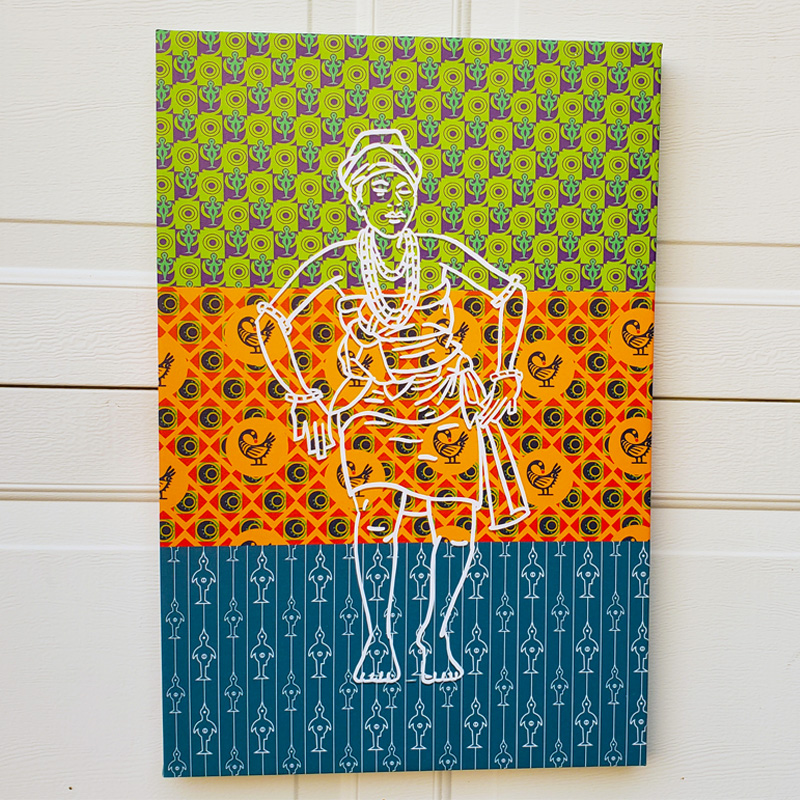
VISIBLE
DIGITALLY PRINTED ON CANVAS. 16” X 24”. MARCH 2023
The artwork bears the title “Visible,” skillfully blending three of my original cloth designs with an enchanting portrayal of a dancing woman, symbolizing my beloved granny. Within this piece, the symbols and teachings passed down by my grandmother are vividly manifested, a heartfelt tribute reflecting gratitude and profound honor.
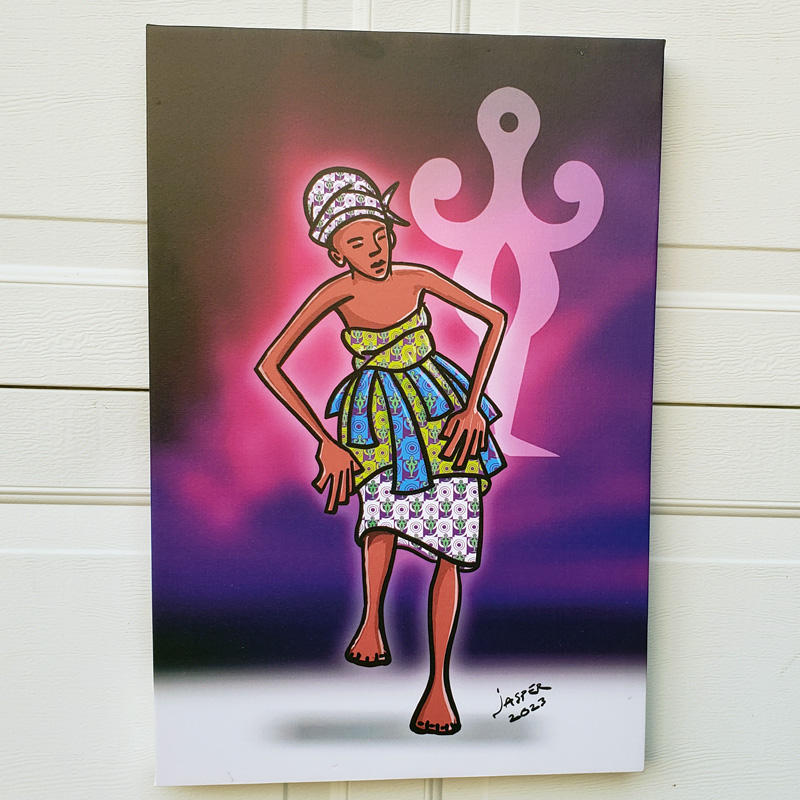
CONTENTMENT
DIGITALLY PRINTED ON CANVAS. 16” X 24”. MARCH 2023
This captivating artwork symbolizes contentment, featuring a woman joyfully immersed in the traditional Ewe dance known as Agbadza. Wrapped in my cloth design crafted to represent contentment, she exudes a profound sense of pride in her cultural heritage. Unashamed and exuberant, she dances with unbridled joy, a powerful testament to the beauty of embracing one’s roots and celebrating them with unwavering pride.
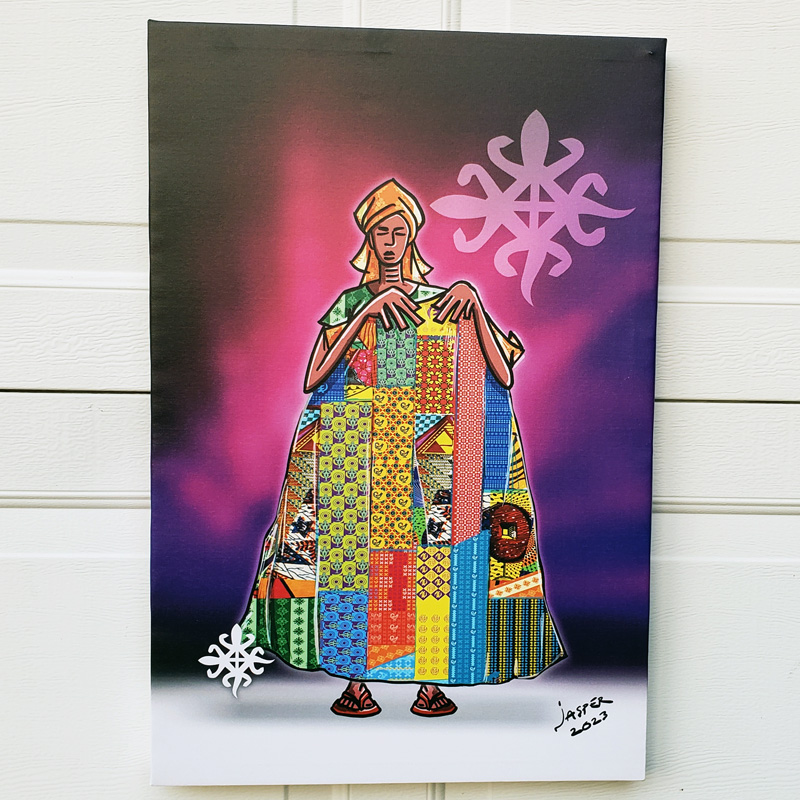
DIVERSITY
DIGITALLY PRINTED ON CANVAS. 16” X 24”. MARCH 2023
This artwork beautifully embodies the essence of diversity, showcasing a woman gracefully draped in a cloth named “Sasa” in Ewe culture. The cloth itself is a harmonious fusion of various fabric pieces seamlessly sewn together. Through this portrayal, the artwork exquisitely conveys the message of unity in diversity, celebrating the rich tapestry of life’s varied elements coming together as one.
Through digital illustrations, I present my artistic interpretation and representation of the concepts “Visible,” “Contentment,” and “Diversity.”

